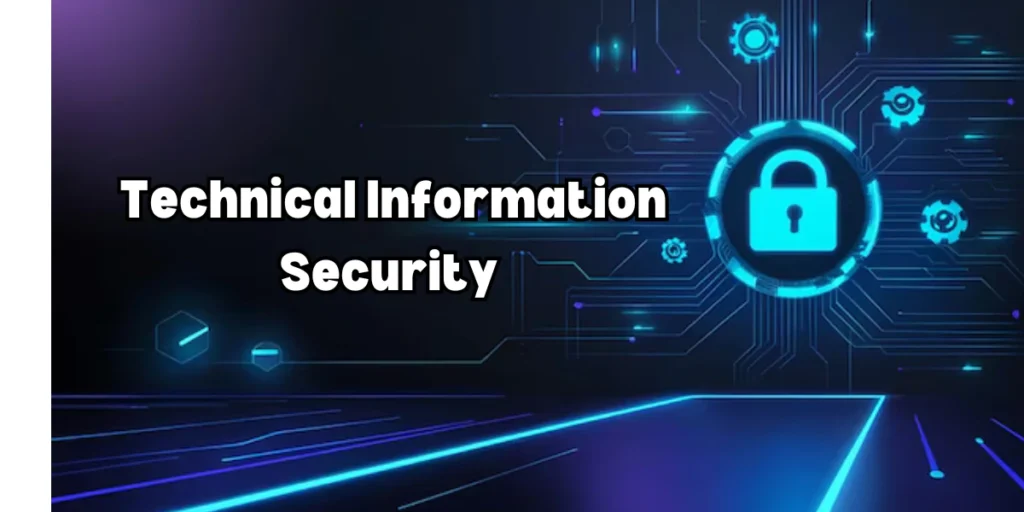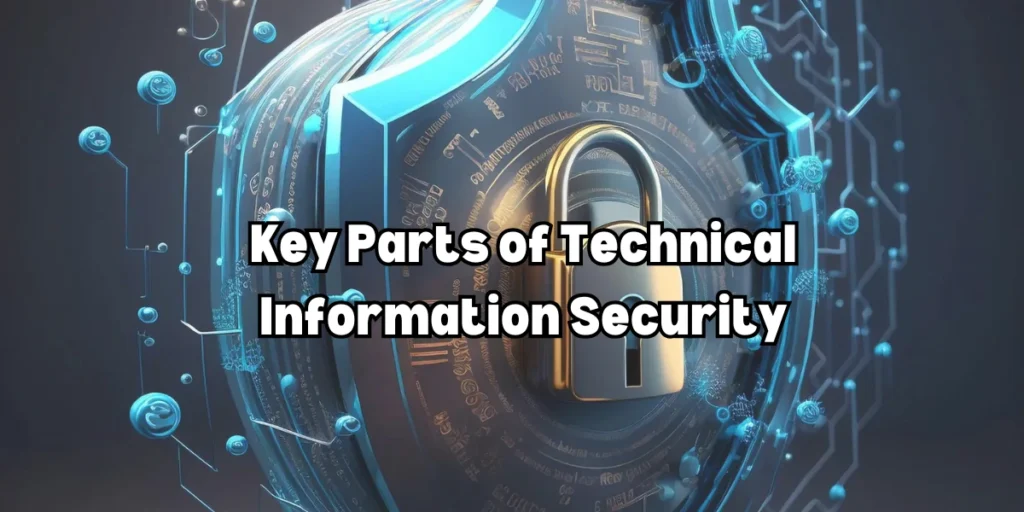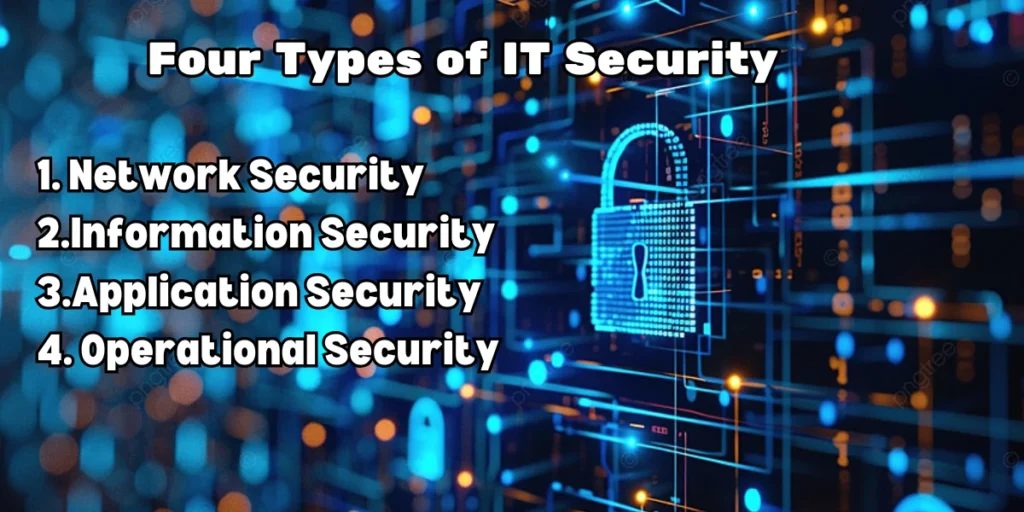In our digital world today, keeping data and systems safe is super important. Businesses, individuals, and government groups all have to deal with the reality of cyber threats. That’s where IT security, or information technology security, comes into play. It protects our digital stuff from nasty attacks, data leaks, and unauthorized access, making sure that sensitive information stays safe. In this article, we’re gonna explore IT security by looking at its role, the tech involved, the different kinds of IT security, and how information technology helps improve security measures.
What Does IT Security Do?
The main job of IT security is to keep data, networks, and systems safe from cyber threats. It works like a multi-layered defense that helps companies maintain the confidentiality, integrity, and availability (CIA) of their information. These three parts, known as the CIA triad, are the building blocks of any information safety strategy.

- Confidentiality: IT security makes sure that sensitive info is only available to those who are supposed to see it. This keeps personal info, financial data, trade secrets, and more from being accessed or revealed by people who shouldn’t have it.
- Integrity: IT security protects the accuracy and consistency of data. It stops unauthorized users from changing or messing up data, so that the information stays trustworthy.
- Availability: IT security also guarantees that approved users can get the info when they need it. Systems have to be running and available for legit users all the time, especially in important fields like healthcare, finance, and government.
But IT security isn’t just about defending against outside threats. It also looks after internal risks by keeping an eye on user access, putting security rules in place, and making sure that people comply with regulations like the General Data Protection Regulation (GDPR) and the Health Insurance Portability and Accountability Act (HIPAA).
Why IT Security is More Important Than Ever.
Cyber threats are getting more advanced, and as technology grows, so do the risks. Over time, businesses have moved online, employees are often working from home, and the number of connected devices has exploded. This has created more opportunities for cybercriminals, which means companies need to be proactive about IT security.
A successful breach can cause huge financial losses, legal issues, and damage to a company’s reputation that can’t be fixed. IT security helps reduce these risks by spotting potential weaknesses, putting the right security measures in place, and reacting to threats in real-time.
What is Technical Information Security?

Technical information security is all about using different technologies and methods to protect digital information and IT systems. It covers a variety of tools that are meant to keep systems and data safe from malicious threats, vulnerabilities, and unauthorized access. Unlike other kinds of security that might focus on policies or human behaviors, technical information security is mainly about tech aspects of cybersecurity.
Key Parts of Technical Information Security

1. Firewalls: A firewall is a security system that watches and controls incoming and outgoing network traffic. It sets up a wall between a safe internal network and untrusted external networks, like the internet, to block harmful traffic.
2. Encryption: Encryption is turning readable data into a coded format that only those who are allowed can read. It makes sure that even if data is intercepted, it stays unreadable to anyone without the right key.
3. Intrusion Detection and Prevention Systems (IDPS): IDPS are tools that observe network or system activities for bad behavior. Intrusion detection systems (IDS) alert admins to potential threats, while intrusion prevention systems (IPS) take action to stop bad activities.
4. Access Controls: Access control measures limit who can see certain information or systems depending on user roles. By using multi-factor authentication (MFA), organizations can check user identity before giving access to sensitive data.
5. Antivirus and Anti-malware Software: These programs identify, block, and get rid of viruses and other harmful software from systems. They’re crucial for stopping malware attacks that could lead to data theft, ransomware, or even system issues.
Technical information security helps keep information systems safe from unauthorized access and damage, whether it comes from hackers outside or insider threats. It creates a strong defense by combining different technologies and tools, each meant to cover specific weaknesses in a system.
What Are the Four Types of IT Security?

IT security includes several areas, each aimed at protecting different parts of a company’s digital world. Knowing these categories is important for putting together a solid cybersecurity plan. The four main types of IT security are:
1. Network Security
Network security is all about keeping data and resources safe across a network, which includes internet connections, cloud services, and internal company networks. A secure network makes sure only authorized users can access the system and that data moving around is safe from spying or being intercepted.
Important measures in network security include:
- Firewalls: They act as a barrier between a trusted network and external networks.
- Virtual Private Networks (VPNs): They protect data in transit by creating a safe, encrypted connection between the user and the network.
- Intrusion Prevention Systems (IPS): They automatically block harmful traffic by looking for unusual behavior.
- Secure Socket Layer (SSL)/Transport Layer Security (TLS): They encrypt data sent between devices, like web servers and browsers.
By keeping a secure network, companies can guard against common attacks like Distributed Denial of Service (DDoS), unauthorized access, and man-in-the-middle attacks.
2. Information Security
Information security is focused on keeping data safe, whether it’s stored electronically or in physical form. This includes sensitive stuff like personal details, financial info, and proprietary business data. Information security strategies make sure data is kept confidential, accurate, and only available to authorized users.
Common approaches for information security include:
- Data Encryption: Makes sensitive data unreadable to prevent unauthorized access.
- Backup and Recovery: Ensures that data can be restored if it’s lost or damaged.
- Access Controls: Limits who can access information based on user roles and permissions.
By securing data, organizations save themselves from breaches, identity theft, and other types of cybercrime that target personal and financial information.
3. Application Security
Application security focuses on protecting software applications from weaknesses and attacks. Since applications are prime targets for cybercriminals, protecting them is essential for keeping sensitive data and system functions safe. Application security considers security through the software development process, from design to deployment and beyond.
Key strategies for application security include:
- Secure Coding Practices: Making sure software is built using the best practices to reduce security flaws.
- Regular Updates and Patching: Keeping software up-to-date to block the exploitation of known vulnerabilities.
- Input Validation: Checking that user inputs are free from malicious code that could cause attacks like SQL injection or cross-site scripting (XSS).
By emphasizing application security, organizations can prevent issues like malware infections, denial of service (DoS), and unauthorized access to app data.
4. Operational Security (OPSEC)
Operational security, or OPSEC, is about the processes and procedures used to keep sensitive information from being revealed through daily business activities. It looks at how information is handled inside a company, spots potential vulnerabilities, and puts rules in place to minimize risk.
Common OPSEC practices include:
- Data Classification: Categorizing data by sensitivity to figure out how it should be protected.
- Employee Training: Teaching staff about security protocols and how to spot potential threats.
- Incident Response Plans: Setting up steps for how to react to a security breach or incident to lessen damage.
OPSEC is a vital part of IT security since it deals with human elements, policies, and the physical security of information systems, ensuring that security isn’t weakened through operational issues.
How is Information Technology Used in Security?
Information technology is key in boosting security across different industries. From keeping communication lines secure to tracking suspicious activities, IT solutions have become important for building strong defenses against cyber threats. Here are several main uses of IT in security:
1. Data Encryption
Encryption is a key part of IT security, keeping data safe from unauthorized access. Information technology allows organizations to encrypt sensitive information both while it’s being sent and when it’s stored, making it unreadable without the right decryption key.
For instance, banks use encryption to safeguard customer account details, and healthcare providers use it for securing patient records in line with HIPAA.
2. Authentication and Access Control
Information technology has changed how organizations handle user authentication and access control. Technologies like multi-factor authentication (MFA) require users to give two or more forms of verification to get into systems, making it much harder for attackers to break into accounts.
Biometric authentication, like fingerprint or facial recognition, also boosts security by ensuring only the right people can get into key systems.
3. Security Monitoring and Threat Detection
IT systems are vital for constantly checking networks and systems for any suspicious activities. Security Information and Event Management (SIEM) tools look at logs and identify unusual behaviors, alerting security teams to possible breaches. These systems help companies act quickly when incidents happen, reducing the time hackers have to take advantage of weaknesses.
For example, SIEM tools can notice odd login attempts or large amounts of data being moved out of the network, which could mean a security breach.
4. Incident Response and Recovery
IT systems play a key role in managing how to respond to and recover from incidents. Automated response systems can cut off affected systems, block bad traffic, and begin recovery procedures right after spotting a breach. Backup solutions make sure that data can be restored if it’s lost or damaged, lessening the fallout from cyber incidents.
Companies use IT tools to put together incident response plans that detail what steps to take during and after a security breach. These plans usually include procedures for restoring data, communicating with stakeholders, and investigating to find out what caused the breach.
5. Cloud Security
As more companies move to the cloud, securing cloud infrastructure has become a major focus of IT security. Cloud providers offer various security tools, like encryption, access controls, and threat monitoring, to help protect data in the cloud. However, organizations also have to take responsibility for putting their own security measures in place to keep their cloud environments safe from unauthorized access and data leaks.
Conclusion
IT security is a constantly changing field that’s crucial for keeping sensitive data, networks, and systems safe from all sorts of cyber threats. By understanding the role of IT security, technical information security, the different types of IT security, and the ways IT is used in security, organizations can build solid defense strategies to protect their digital assets.
In a time when data breaches, ransomware threats, and phishing scams are everywhere, having a strong IT security approach isn’t just a nice-to-have—it’s a must.


